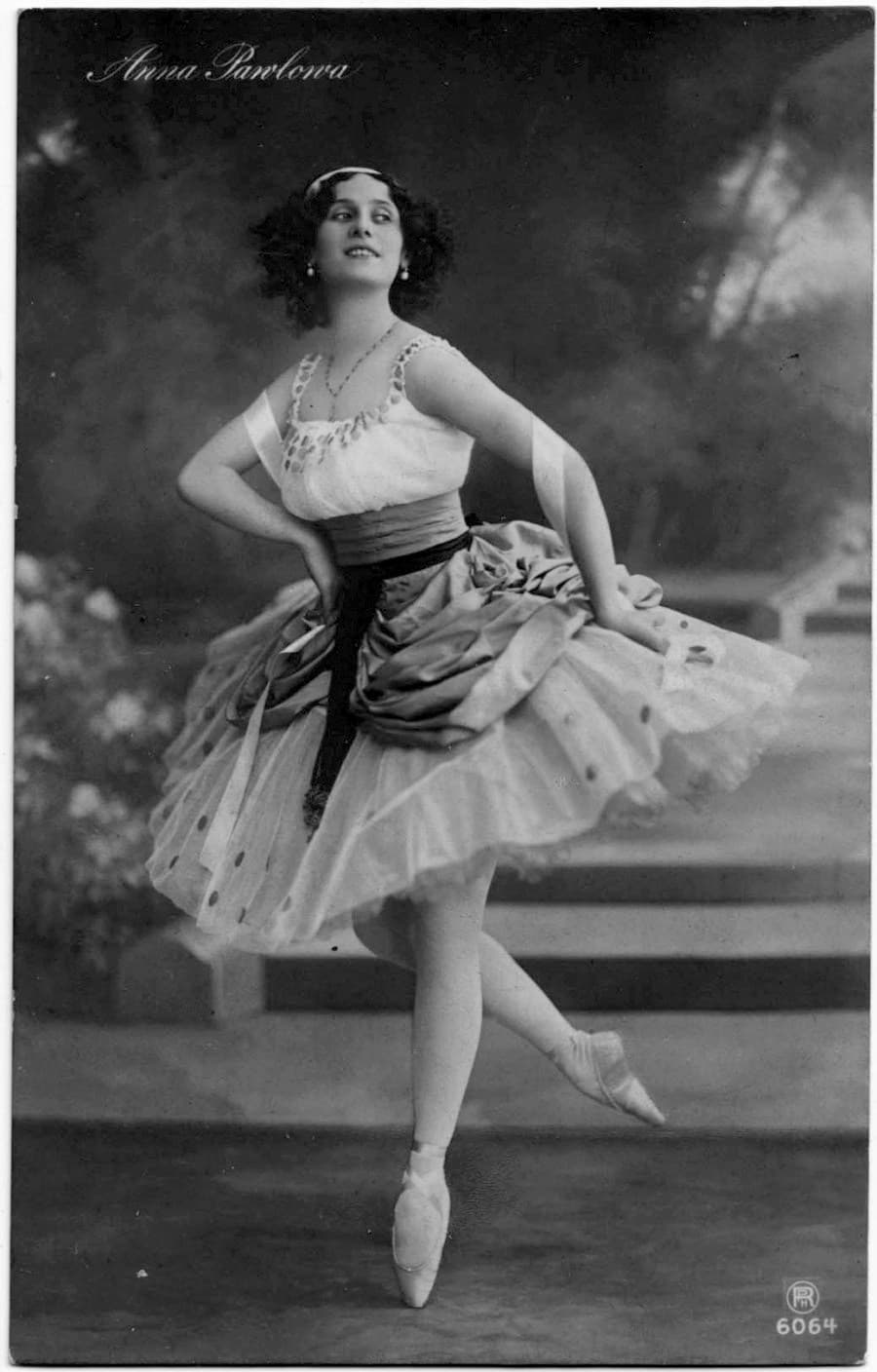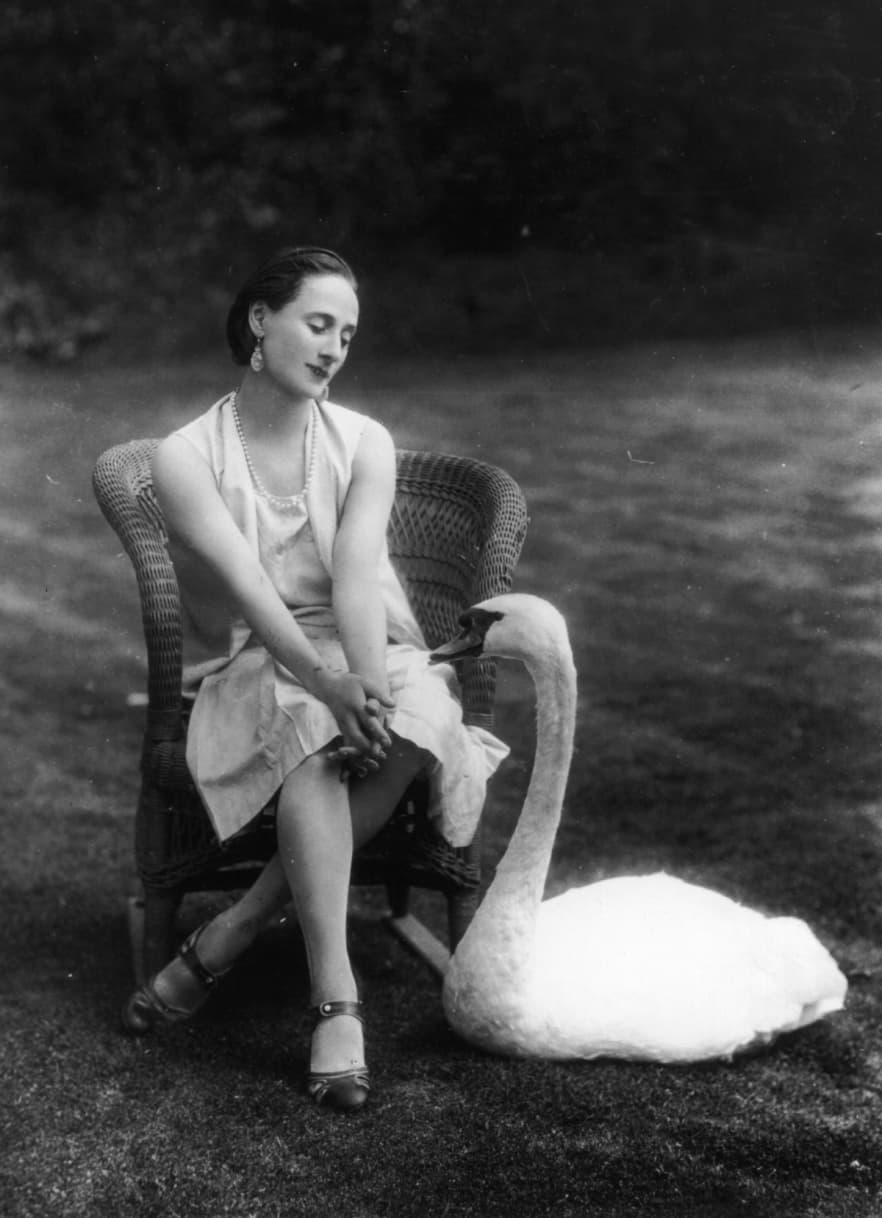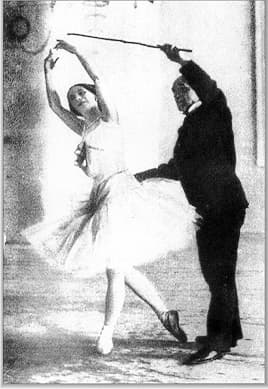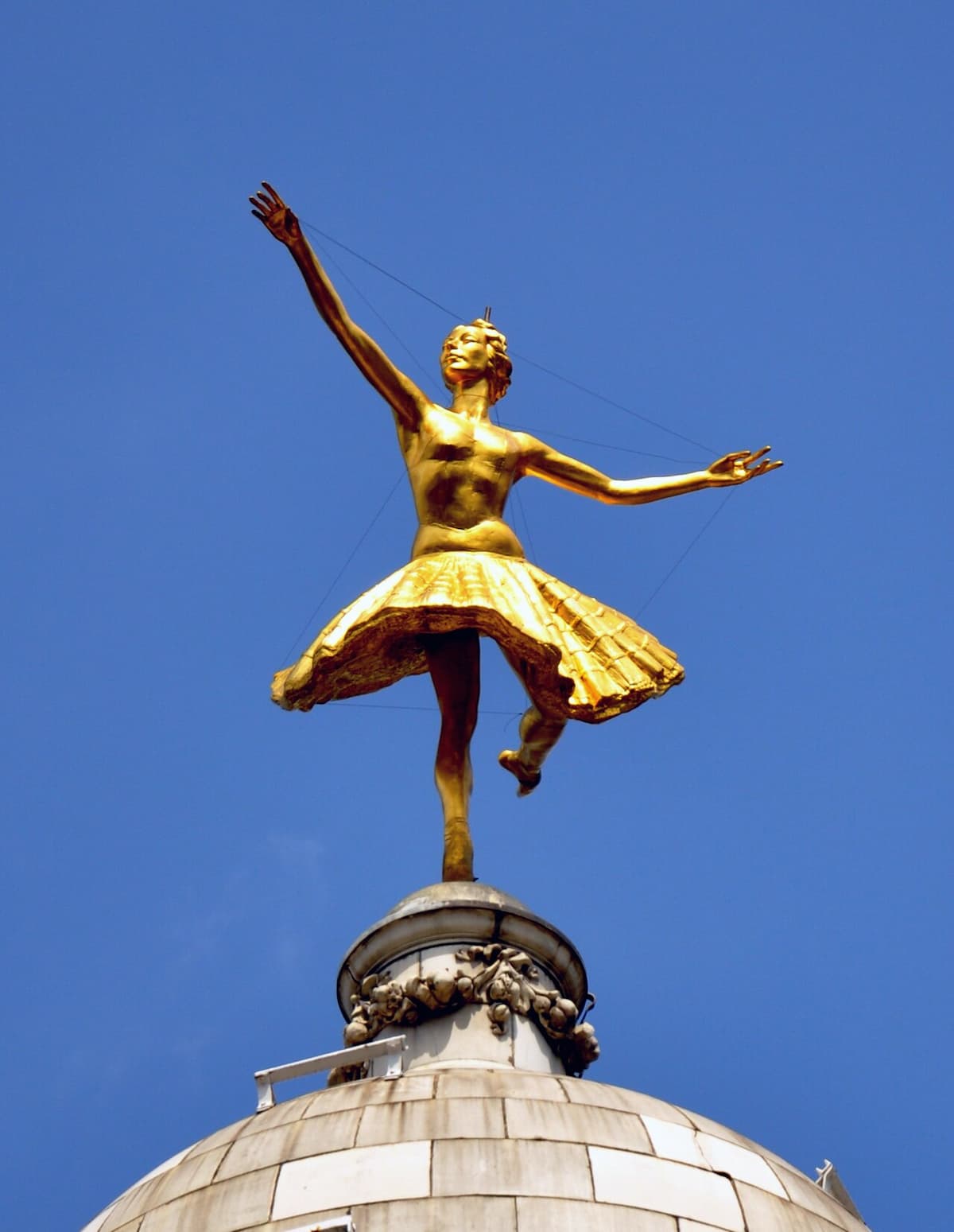The Russian ballerina Anna Pavlova (1881-1931) was without doubt the most celebrated dancer of her time. Famed for her technical skills, expressiveness, and grace, she was the principal artist of the Imperial Russian Ballet and, for a short time, the Ballets Russes of Serge Diaghilev.

Anna Pavlova, 1912
Pavlova became universally recognized for her creation of the role of “The Dying Swan,” and subsequently formed her own ballet company, taking creative control over the performances and choreographing her own roles. To celebrate her birthday on 12 February, we decided to pay tribute to this extraordinary dancer and artist.
Anna Pavlova: “The Dying Swan”
The Dying Swan
Let’s start with the famous ballet “The Swan” choreographed by Mikhail Fokine to the music of Saint-Saëns in 1905 specifically for Pavlova. Apparently, Pavlova was inspired by Alfred Lord Tennyson’s poem “The Dying Swan,” and she asked Fokine to create this work. It premiered on 22 December 1905 at a charity gala to raise money for widows and orphans. It became Pavlova’s signature ballet and was soon performed across the world.
The original concept of the piece is that the Swan has been wounded and is painfully fighting against death, but in the end, it loses its battle and dies. In the Fokine creation, “the dying swan does not make enormous technical demands, but rather enormous artistic ones because every movement and every gesture should signify a different experience, which is emerging from someone who is attempting to escape death.”

Anna Pavlova as the Dying Swan
The Fokine/Pavlova version has been updated to become a highly technical dance today, which has little in common with the original. The granddaughter Isabelle Fokine writes, “The ballet, in essence, is not about the beauty of a ballerina being able to transform herself into a figure of a swan. It is not about a swan, but it is about death, and the swan is simply a metaphor.” According to an anecdote, when Anna Pavlova was lying on her deathbed, her last words were, “get my Swan costume ready.”
Paul Dukas: La Péri (The Fairy) (Lille National Orchestra; Jean-Claude Casadesus, cond.)
The Early Years
Anna Pavlova was born in a regimental hospital in Saint Petersburg on 12 February 1881. Her stepfather was an enlisted man, and her mother came from peasant stock and worked as a laundress at the house of a Russian-Jewish banker. The identity of Pavlova’s biological father is unknown, and there has been speculation that she might be the daughter of the banker her mother worked for.
Anna was born prematurely, and she was a sickly child. However, she had a very active imagination and once described her burning passion for ballet, “I always wanted to dance; from my youngest years… Thus, I built castles in the air out of my hopes and dreams.”
In a life-changing event, her mother took her to a performance of Marius Petipa’s production of The Sleeping Beauty at the Imperial Mariinsky Theater in 1890. Anna was determined to become a dancer herself, and her mother actively supported her daughter’s dream.
Anna Pavlova: “Invitation to the Valse”
Following her Dream
She took Anna for an audition at the renowned Imperial Ballet School at the age of nine, but she was rejected because of her “sickly appearance.” She tried again one year later and was finally accepted. Her initial teachers, Ekaterina Vazem and Pavel Gerdt, quickly recognized her extraordinary gift. Anna worked incredibly hard to overcome her physical obstacles, as her body type was not ideal, and she had weak ankles, which made it difficult to dance on pointe.

Anna Pavlova with ‘Jack’ © National Portrait Gallery, London
She first appeared on stage in Petipa’s “A Fairy Tale,” which the ballet master had staged for the students of the school. However, Anna was bullied by her classmates and called “the broom,” and “the little savage.” Nevertheless, Anna was determined and endlessly practiced her steps. As she once explained, “No one can arrive from being talented alone. God gives talent; work transforms talent into genius.”
Ludwig Minkus: Paquita (Anna Takova-Baynova, violin; Valentina Raicheva, harp; Sofia National Opera Orchestra; Boris Spassov, cond.)
Famous Teachers

Enrico Cecchetti teaching Pavlova
The Imperial School of Ballet was one of Tsarist Russia’s most magnificent venue for the performing arts. Legendary dancers and teachers helped Anna to develop her innate talent for dancing. Anna took lessons from Christian Johansson, Nikolai Legat, and the greatest ballet virtuoso of the time, Enrico Cecchetti. By 1888, Cecchetti was the superstar of the Imperial Ballet, who revolutionized the role of the male dancer.
He devised his own method, which looked to develop essential skills in dancers as well as strength and elasticity. As a teacher, he fused the best elements into the “Cecchetti Method.” He was recognized as a key contributor to modern classical ballet, and his students included Anna Pavlova, Léonide Massine, Vaslav Nijinsky, George Balanchine, and Ruth Page among countless others.
Cesare Pugni: The Pharaoh’s Daughter (excerpt)
Graduation and Choreographers
Anna Pavlova graduated from the Imperial School of Ballet at age 18 and joined the Imperial Ballet. She quickly established herself as a virtuoso dancer, entering into two very famous partnerships with famous choreographers. Ballet Master Marius Petipa was a legend in his own right. He had strict aesthetic guidelines and insisted on perfect technique, but his conception was frequently challenged by Pavlova’s innovative style of dance.
The second famous choreographer was Michel Fokine, who changed the face of Russian ballet at the time of Pavlova’s meteoric rise. It was Fokine who created Pavlova’ most famous role, and he would play a decisive role in pulling Pavlova away from the Imperial Ballet to the Ballets Russes. In the event, by 1906 Pavlov had attained ballerina status.
Adolphe Adam: Giselle (Slovak Radio Symphony Orchestra; Andrew Mogrelia, cond.)
Ballets Russes

London, Victoria Palace Theatre, rooftop statue of Anna Pavlova
Pavlova made her first appearance outside Russia dancing the title role of Giselle in Warsaw, and in 1907 she went on a European tour with colleagues from the Imperial Ballet. Pavlova was highly acclaimed and, by 1908, embarked on another European tour. Pavlova appeared with the Ballets Russes under the auspices of impresario Serge Diaghilev.
Pavlova danced the leading roles in several ballets by Mikhail Fokine, including Le Pavillon d’Armide, Egyptian Nights, and Les Sylphides. However, she never became part of the closely knit Diaghilev company, as she turned down some of the most innovative roles offered, including the title role in Stravinsky’s Firebird. “Her destiny was not, as was theirs, to innovate but simply to show the beauties of classical ballet throughout the world.”
Anna Pavlova: “The Dumb Girl of Portici”
Pavlova Company
Although Pavlova would dance again with the Ballets Russes as a guest ballerina, she left the outfit in 1910 and founded her own company. In charge of her own company, Pavlova added abridgements of many of her favourite ballets and passages to their repertoire including Giselle, The Magic Flute, La Fille mal gardée, and many others.
Pavlova also added new short ballets based on scenes from full-length ballet, and some of her famous solo dances, choreographed by Ian Clustine, were created. These include The Dragonfly, The California Poppy, and Invitation to the Valse. Pavlova departed from Russia and permanently settled in London. Together with her company, she set out on tours across the world, performing in Mexico, India, China, Japan, and Australia.
Anna Pavlova: “Californian Poppy”
Legacy
Pavlova toured the world for roughly twenty years, gaining international recognition and stardom. Her contributions to the art form of ballet were universally recognized, but her health had continued to suffer. While touring the Netherlands in 1931, she contracted pneumonia, which developed into pleurisy. Pavlova died on 23 January 1931, just three weeks shy of her 50th birthday.
Pavlova’s performances left a lasting memory on her audiences, and it inspired many artworks attempting to capture her disciplined grace and poetic movement. Commenting on a painting by John Laverty, a critic writes, “Pavlova was caught in a moment of graceful, weightless movement…her miraculous, feather-like flight, which seems to defy the law of gravitation.”
As one of the most celebrated and influential ballet dancers of her time, her passion and grace were captured in striking photographic portraits and some grainy early films. Her legacy lives on through dance schools, societies established in her honour, and future generations of dancers she inspired. And not to be outdone, the meringue-based dessert known as “Pavlova” is served on holidays in Australia and New Zealand, the region where it was created and named in her honour.
For more of the best in classical music, sign up for our E-Newsletter
